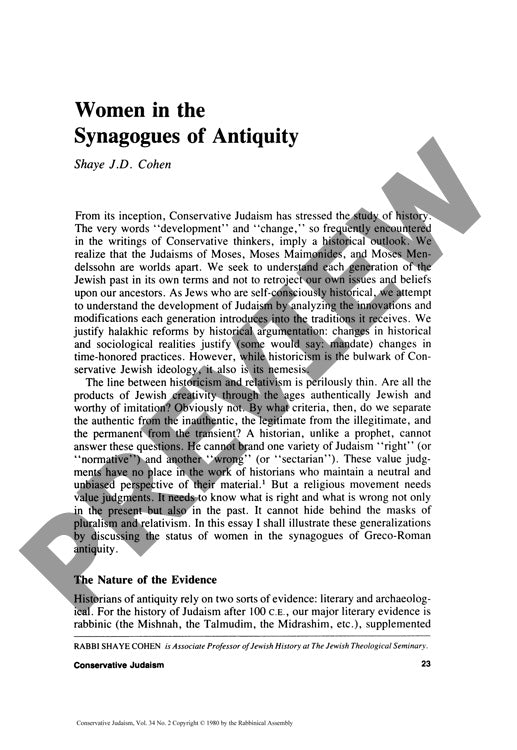Women in the Synagogues of Antiquity
Couldn't load pickup availability
Ancient Jewish women wielded far more religious authority and financial influence than traditionally assumed, especially in diaspora synagogues during the Greco-Roman period. Through combined analysis of archaeological findings and epigraphic evidence, particularly synagogue inscriptions, a complex picture emerges of women's roles in ancient Jewish communities. The investigation addresses three critical aspects: women's involvement in synagogue construction and maintenance, seating arrangements during services, and female leadership positions. Archaeological evidence reveals that women frequently served as synagogue donors, particularly in diaspora communities, with inscriptions from Apamea and Hammath-Gadara documenting substantial female financial contributions. Regarding seating arrangements, no conclusive evidence exists for gender segregation, challenging traditional assumptions about "women's galleries" in ancient synagogues. Most significantly, Greek inscriptions from Smyrna, Myndos, and Crete identify women holding the title archisynagogue (head of synagogue), while epitaphs from Rome, Leontopolis, and Beth Shearim refer to Jewish "priestesses." The findings demonstrate the pluralistic nature of ancient Judaism, revealing that diaspora communities operated independently of Palestinian rabbinic authority and occasionally permitted women to assume leadership roles that later rabbinic tradition would prohibit. These archaeological discoveries illuminate previously unknown varieties of ancient Jewish practice that diverged significantly from normative rabbinic Judaism.

More Information
-
Physical Description
-
Publication Information
Published 1980
ISBN
-
Publication Credits
Shaye Cohen

